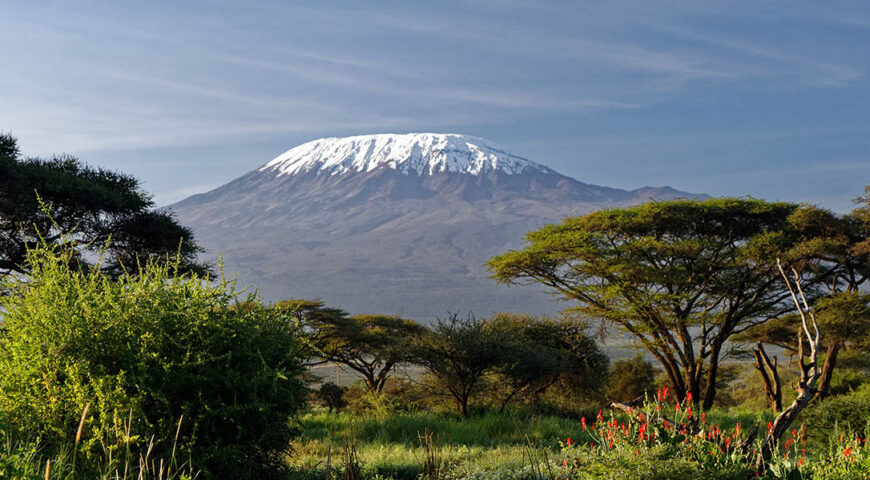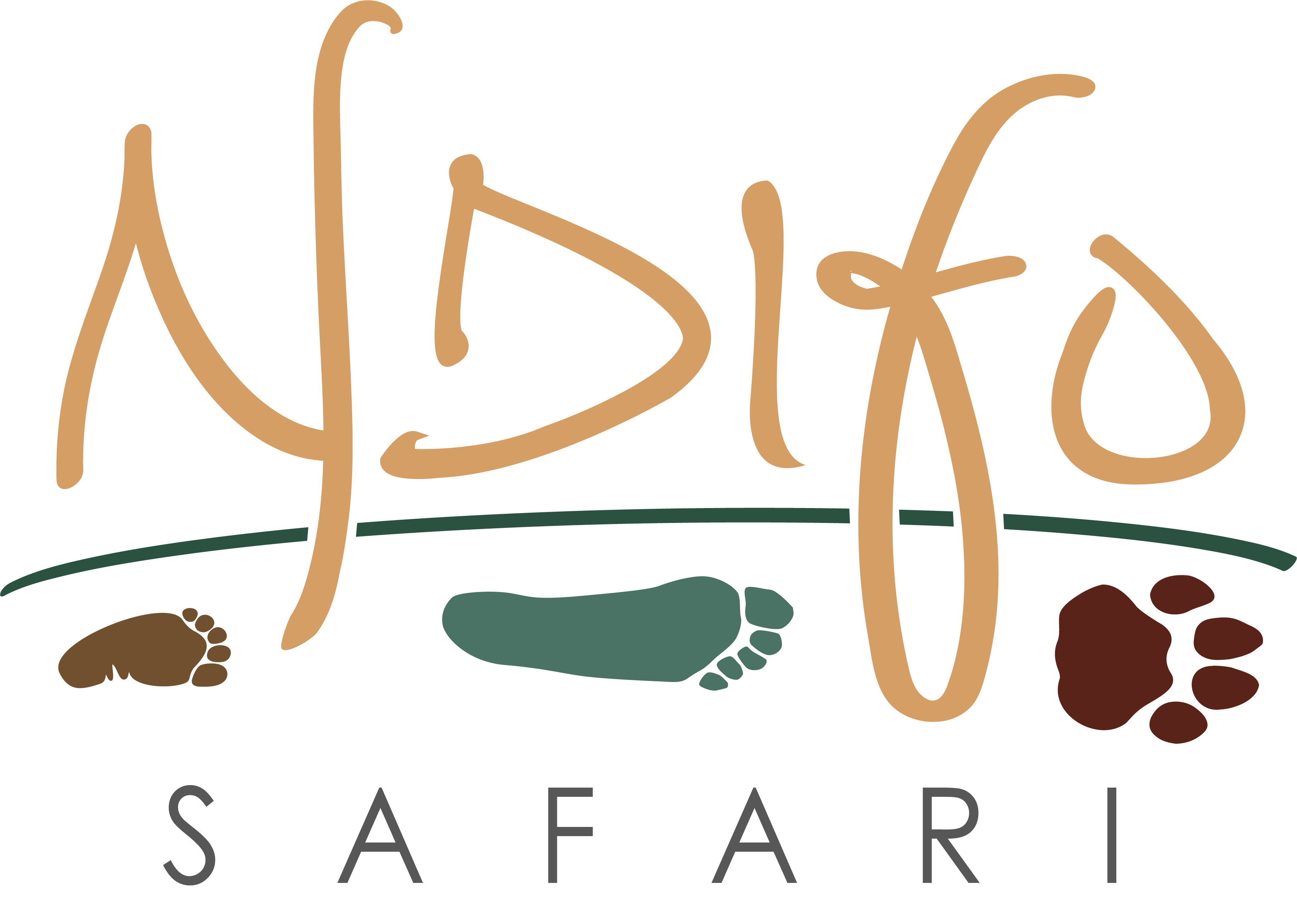
The Climb
The Ndifo Crew Climbs Mt. Kilimanjaro
After months of training and preparation, the Ndifo Crew took to the mountain in April for seven life-changing days and nights. It was the most difficult thing any of us have ever done. Gym training and cardio can get your physical body ready for this, but there are few experiences that ready your mind and spirit for the challenges faced on such a long climb. The feeling of discovering that all the clothing that is currently not on your body is soaked through inside a faulty waterproof bag, and will not dry at any point on the trip, can be overwhelming (more about the rainy season below). Altitude sickness trying to consume you more and more each day makes you question every step forward. The experiece could make or break anyone. And coming down the mountain is almost as hard as going up on slick piles of gravel and snow that feel more than quicksand than a mountain.
Steve Ngowi, Ndifo’s owner & lead guide, was born and raised on the southern slope of Kilimanjaro. Although he’d spent his life gazing at the mountain, he never dreamed of climbing it. “Climbing was for the foreign visitors to Tanzania,” Steve remembers, “it is not something that many local citizens can afford to do. Much gear and training is needed for this climb.” Steve did know young men his age who became porters for the tourist climbs – everyone knew what a hard life that was carrying up to 33lb (15kg) on their backs and heads up and down the 19,300ft (5,895m) slick rock mountain over and over with only the most basic gear. So like most other Tanzanians, just the thought of making the climb never crossed Steve’s mind.
But now that Steve is a tour operator himself, he found guests asking his opinion about the climb. To be able to consult in a knowledgeable manner, he knew that it was time to climb the mountain himself. And as a Tanzanian, he felt that it was time to claim his own Tanzanian experience on Kilimanjaro. The crew spent months working out and running each day to get ready. It was a mission. Below, we detail more of the experience and recommendations for prospective climbers.
Now that he’s done it, this is one more aspect of the wonders of Tanzania that Steve can share with guests when they want experiences beyond safari. Read more here about what this climb means to Steve.
Want to do it, too?
Here are some tips for planning your Kilimanjaro climb
- When you go is VERY important

We did this trip at the height of rainy season, which isn’t recommended for many people. The rain caused the living conditions to be more difficult than the actual climb at times. It rained inside our tents many nights, so everything we had stayed wet. Wearing a poncho half the time kills the mood a little as well. However, there are very few climbers on the mountain this time of year – the place belongs to you, and you move at your own pace. When you go during the more physically comfortable high season, the mountain will experience incredible traffic jams at places like the Barranco Wall (described in harrowing detail below) where climbers must pass one-by-one. When there are hundreds of climbers and porters passing through this bottleneck, you may wait for hours just to pass.
- Rainy season: End-February to mid-May
- Peak season: June to October
- High season: Through the end of November

- Getting Ready

You don’t have to be an elite athlete to climb Kilimanjaro whatsoever, but you have to be in the best shape of your life and able to climb for hours on back-to-back-to-back days. You’ll be navigating slick mountain rocks and incredibly steep snow packs for up to 8 hours in a day – and in some spots you’ll use your arms to pull yourself over a ledge. Get your lungs ready for extreme altitude. It wouldn’t hurt to check in with a doctor before you go. Train somewhere at altitude if you have a chance as your lungs will suffer far more than your legs if your cardio isn’t there.
- Know Your Gear & Your Clothing
Be sure you have the right gear. (Full recommended list below.) Don’t skimp on this step. Test your gear before you come. The first night of your climb shouldn’t be the first time you check the batteries in your flashlight. Go camping with all your gear at least one night before so that you know what works before you are on the mountain. Be sure you like the smell of the inside of your sleeping bag – you’ll be taking shelter in it more than you can know. Wear your clothes and hiking boots around flat groud for a bit before you wear them on your way up. Be sure everything is very comfortable. Your clothing should be as waterproof as possible. Test everything out – we found out the hard way that there are different levels of waterproof. This goes for your bag covers as well.
- Tipping
Bring cash tip money for your guides and porters. When you see these human beings carry all your stuff – clothes, tent, sleeping bag, food, water, toilet, and all your toiletries for a week – up the same implausibly impassible route you are struggling up, you will want to thank them the best way possible. So little goes so far, and they work so hard for your safety and happiness. You’ll have 6-7 porters and one guide per climber. Not only will they haul and prepare all your food for a week, they will assemble your tent each day before you arrive at camp and bring you tea in your tent each morning.
- Route
Pick the Route that is right for you considering length of time you want and one that fits your physical capabilities. We took the Machame Route to the summit. It’s a 7-day route that we took in 6. We’ll describe our experience by day below.
Machame Route Notes
This is now the most popular route on the mountain. Compared with Marangu, the days on Machame are longer and the walks are steeper. The Machame route is considered a difficult route, and is better suited for more adventurous folks and those with some hiking or backpacking experience. The route begins from the south, then heads east, traversing underneath Kilimanjaro’s southern ice field before summiting.
The minimum number of days required for this route is six days, although seven days is recommended. The Machame route is scenically beautiful and varied. However, due to the heavy crowds, it loses some of its splendor during high season.
Gear
This is just as important as your own body’s physical readiness.
The right gear will make all the difference in your climb:
| Outer Pants |
|
| Jackets |
|
| Under Clothes |
|
| Shoes |
|
| Socks |
|
| Gear |
|
| Gloves |
|
| Sleeping Bag |
|
| Headgear |
|
| Duffle Bags |
|
| Sunscreen and Wet Wipes |
|





















